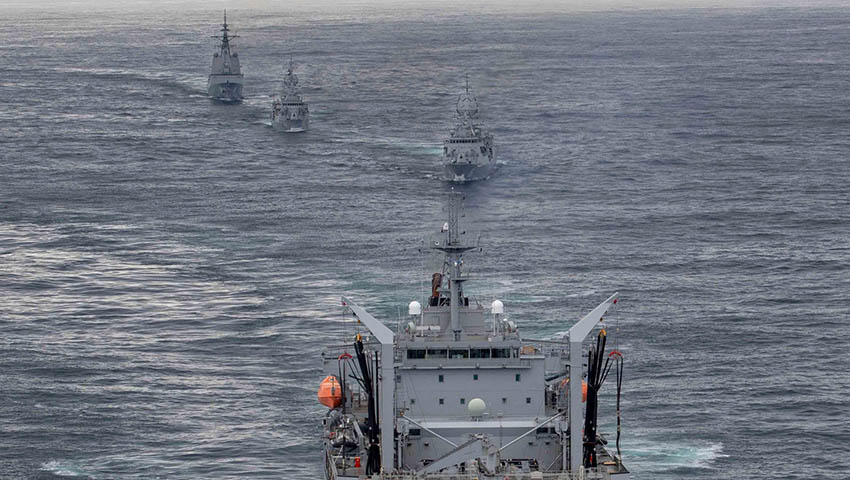Navy’s ability to exercise multiple ships, submarines and aircraft during the Fleet Certification Period 2020 (FCP20) has benefited from its ability to train in complex scenarios in a simulated environment against peer and near-peer competitors.
To continue reading the rest of this article, please log in.
Create free account to get unlimited news articles and more!
Prior to the fleet sailing to Bass Strait for the sea phase of FCP20 this week, Maritime Task Group staff conducted a period of deliberate planning and war gaming followed by a week of synthetic exercises at the Navy Synthetic Warfighting Centre at HMAS Watson in Sydney.
Commander Australian Maritime Task Group, Captain Andrew Quinn, said that the week of simulated high-end, peer or near-peer warfighting had been crucial ahead of this year’s certification period, which is the first time the Hobart Class destroyer, HMAS Hobart, has participated.
CAPT Quinn explained, "What has been most successful as we’ve gone through this high-end warfighting in a simulated environment is that we can develop the realism into the scenario and to validate our planning and tactics to create an excellent training opportunity for a lot of people.
"This is the first time we’ve brought the capabilities of the guided missile destroyer to bear in the Fleet Certification Period, so we’ve also had to step up the preparations of our combined participants and synthetic activity to reflect that."
HMA Ships Canberra, Hobart, Stuart, Arunta, Sirius, Diamantina and Huon, and HMA Submarines Collins and Farncomb are participating in FCP20.
Participating aircraft include a Royal Australian Air Force P-8A, a US Navy P-8, a Royal New Zealand Air Force P-3K and three RAN MH-60R helicopters.
FCP20 is used to certify whether the ships involved are ready to deploy on behalf of the Australian Government and to test the platforms and personnel involved through maritime warfare serials that graduate in difficulty and complexity.
CAPT Quinn said this year’s certification period would be more complex than in previous years and would also involve two component warfare commanders embarked in Hobart – CAPT Quinn as the Sea Combat Commander, and Commanding Officer Hobart, Commander Ryan Gaskin, as the Air Warfare Commander.
The more robust command and control environment had been one of the key areas of development for this year’s FCP.
"The richness of the simulated environment allowed us to prepare for the extra complexity and we’re now ready to execute this at sea for the remaining phases of FCP20," CAPT Quinn said.
Exercise Director, Captain Pete Bartlett, the Director Fleet Force Generation Directorate, said that capability in the synthetic space had improved significantly over the last few years and had also involved US Military participation.
Last year, Navy used the Viking Series of exercises to further develop its ability to integrate Australian air and surface assets with its US Navy partners and will look to add further international participation in August this year.
"For our Fleet Synthetic Joint activity this year, we will have participation not just from the US but from our Canadian and New Zealand partners as well," CAPT Bartlett added.
Involving more than 2,000 military personnel, the sea phase of FCP20 is held in vicinity of Bass Strait from 17 February to 6 March.
FCP20 will include visits to the Victorian ports of Melbourne and Portland, and to the ports of Burnie, Devonport and Launceston in Tasmania.

 Login
Login







